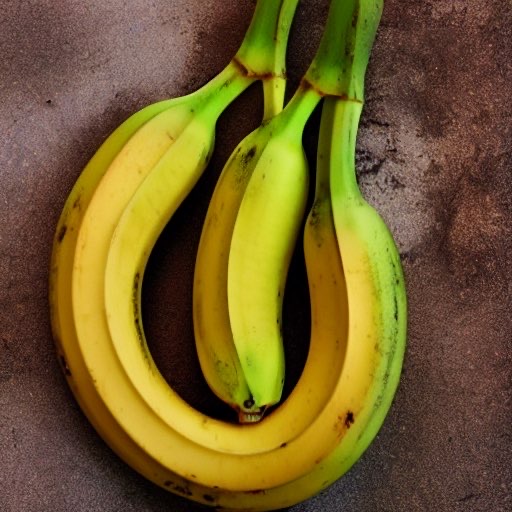I imagine all plastics will be out of the question. I’m wondering about what ways food packaging might become regulated to upcycling in the domestic or even commercial space. Assuming energy remains a $ scarce $ commodity I don’t imagine recycling glass will be super practical as a replacement. Do we move to more unpackaged goods and bring our own containers to fill at markets? Do we start running two way logistics chains where a more durable glass container is bought and returned to market? How do we achieve a lower energy state of normal in packaging goods?
Cellulose. Wax paper. Stuff made from seaweed and mushrooms.
This answer isn’t getting enough upvotes
Amen to that. Seaweed food packaging. I know of some people trying to get this accepted at big companies eg airlines. Their kids made a whacky video about plastic’s impact on marine life. Behold: https://www.youtube.com/watch?v=mT4BVDbXS1Y
I would love to see increased standardization in the food industry limiting the possible sizes and shapes of containers (such as glass) making them easier to wash and reuse as-is. On the home front, for example, it’s ridiculous that I have to go out and purchase brand-new Mason jars for canning instead of being able to reuse a store-bought salsa jar. But more importantly on the commercially-processed food front, standardization would make reuse easier by ensuring that containers do not have to return all the way to their original company; that way a jar used by a raspberry jam company in the Pacific Northwest bought by a customer in Florida could go to a local orange marmalade company for reuse rather than having to travel all the way back to the PNW.
I think should also start seeing a lot more compostable products. We’re already getting there somewhat with paper replacing plastic in shipping, but more products need to be explicitly labeled as compostable, and more municipalities need dedicated compost pickup and processing facilities. It’s insane that we’ve created a soil-to-landfill pipeline for nutrients.
The idea of a standardized container that is so sexy. Bonus points if it comes in a variety of sizes that perfectly scale and tesselate together.
Like the plastic containers you get from Chinese restaurants?
Only someone desperate or lucky would take city compost.
The chemicals that might have been sprayed on them can carry through even a good hot compost and affect your plants.
Then again I also don’t trust commercial compost for the same reason.
I have heard too many stories about losing a whole garden.
Agreed, there’s a lot of issues with municipal compost currently. Ensuring cleaner compost output is important for making sure the end product is usable especially for edible crops, but in the meanwhile my understanding is food waste etc produces fewer greenhouse gasses when allowed to decompose via compost rather than in a landfill. Plus using municipal compost has to be better than the farms that are contaminating the soil with PFAS-laden biosolid fertilizer.
I should probably say I make my own because of those fears
You can reuse jars, ideally you would buy new lids, though when my mother or grandmother would make jam they would reuse “good” lids and the jars would seal well - I found a 20 year old reused jar and lid still sealed
Good lids being those where the seal is in good condition
There are very few lid sizes and threads
Obviously I reuse my canning jars, but I still had to go out and purchase my starting stock. At $1.25 a jar it’s not a cheap endeavor to get into.
I live dangerously- I make yogurt in old jam jars!
…Though you only need to go to 180° and don’t need pressurization for it.But I absolutely echo you with that, the fact that you can’t use most glass for this is insane.
And I only use the Baba Maman jars, they’re the only ones resilient enough.
Composting releases carbon. Turns out that landfills successfully sequester carbon rather effectively.
That statement is naturally only true if you don’t think about it too much -
- Landfills emit methane which is far worse than simple CO2
- The use of compost replaces other sources of carbon which may be coming from fossil sources
Composting releases the same methane that landfills do.
Landfills emit methane when they are filled with biodegradable trash. Parent comment is talking about increasing the volume of biodegradable trash.
Landfills filled with non-biodegradable trash do not emit methane.
I’ve got nothing against composting in general, but it should not be thought of as either a carbon neutral process or as a solution to trash. It is a solution only to biomass that cannot be readily sequestered from the biosphere.
Composting releases the same methane that landfills do.
I don’t think this is correct - methane is produced in anaerobic decomposition, while aerobic decomposition will release CO2.
I’ve got nothing against composting in general, but it should not be thought of as either a carbon neutral process or as a solution to trash. It is a solution only to biomass that cannot be readily sequestered from the biosphere.
I’d agree that it’s a harm reduction strategy, but food production will always have some amount of biomass involved that needs to be taken care of - composting is a beneficial strategy for making good use of this biomass.
The problem that strikes me reading through this thread, and similar conversations about packaging, is that we can do all we want to reduce packaging and plastics at the consumer end, but there’s a huuuuge amount of packaging all the way through the supply chain. From farming supplies, to ingredient packaging, and the packaging used to transport food products to stores. By focussing solely on the consumer end we’re not addressing the whole issue. It’s like the obsession with bamboo toothbrushes and paper / metal straws. They’re consumerist solutions to a problem caused by consumerism.
Speaking of greenwashing I still remember laughing my ass off when I unwrapped a plastic cover for a paper straw, which made it even funnier is that before then, they would wrap plastic straws in paper wrapping, so why they didn’t just use that is completely beyond me.
I remember cheering sarcastically the first time I saw a paper straw actually in a paper wrapping.
But I bet those paper packages of paper straws were bundled into cartons that were wrapped in plastic, and then those were wrapped with other bundles in more plastic. And even if they’re using cardboard boxes as part of that packaging who knows what percentage of that is recycled, or made from recycled waste. Anyone that’s worked in retail knows the incredible amounts of packaging that get binned every day that’s invisible to consumers.
Exactly, there is so much industrial waste before a product makes it to you. Yet everyone focuses on the consumer use which makes it inconvenient for the end user and ignores all the “invisible” waste which would require investment from businesses to fix but would have a far larger effect on the environment. Not being able to get a plastic straw or PE film bag doesn’t really improve anything since the alternatives are worse and in many cases far worse for the environment even when reused.
Which is cheaper, switch out manufacturing processes and change the whole industry, or tell the consumer in a commercial that it’s all on them?
Not really the manufacturing processes, but how individual parts are shipped and protected in transit. But yes, that is my complaint, put all the onus on the consumer without actually making any real improvements because the government isn’t mandating it.
Farming supplies? There is very, very little that we use farming that isn’t stored or transported using reusable containers like trucks, tanks and hopper bins. The most plastic we would use is things like silage tarps or netwrap that get thrown in totes and recycled.
The packaging starts long after it leaves the farm.
Which country are you in? Where I live my food comes from all around the world. Recycling is mostly a Western thing. It doesn’t exist in many of the countries that supply our food. I was just going by the amount of crap I’ve seen in many agricultural areas. Plastic sacks, containers etc.
Canada
So according to this link https://www.ciwm.co.uk/ciwm/knowledge/agricultural-waste.aspx
"Plastic packaging waste from agriculture represents approximately 1.5% of the overall volume of plastic packaging in the waste stream in England. The types of plastic wastes arising can vary and be both bulky and dirty often making the management of these wastes difficult. Around 135,500 tonnes of agricultural plastic waste is produced each year in the UK with;
Approximately 32,000 tonnes being produced from plastic packaging waste; and Approximately 103,500 tonnes being produced from Non-Packaging Plastics (including contamination)."That’s just England. The data is old (2003 I think), and yes 1.5% is not huge, granted, but that’s of total plastic waste, not just from the food chain. A lot of our produce comes from Asia and North Africa where generally there just aren’t the same facilities for recycling, and environmental issues are not as prioritised. It’s great that there’s very little plastic waste in your farming methods, but it’s not the same around the world.
That’s probably an economy of scale thing. On a 5000ac farm, we’ll use hundreds to thousands of liters of every variety of chem and the product is measured in the millions of kg. So using small, non-reusable containers is just a pain in the ass, regardless of the waste it generates.
So all respect due to UK or other countries in Europe, but they’re small potatoes (no pun intended) in the food production scheme, and their waste to end product ratio will be drastically out of whack to the main source of agricultural products like US, Canada, Russia, Australia and Brazil/Argentina. And I know that we aren’t much different in our production methods to those other heavy hitters. So, you’re right, agricultural methods aren’t the same around the world, but when you get into farming at scale, that’s how things are done.
Ok, but we’re getting dragged into a tangential debate about farming when really my point was that we need to look at waste through the whole supply chain, from farming ingredients to getting put on the shelves. I’m sure we could pick apart the contribution of any one part of that chain and debate how significant it is. Together, at all points in the chain, there is plastic waste that the consumer doesn’t see.
(And btw Canada isn’t in the top 20 of global producers, according to the IMF / CIA World Factbook as at 2018; the EU is number 3 https://en.wikipedia.org/wiki/Agriculture)
Edited to add: this 2022 UN report states that plastics are used extensively in agriculture and goes into how they are used and how they enter soil and water supplies: https://wedocs.unep.org/bitstream/handle/20.500.11822/40403/Plastics_Agriculture.pdf
And this is another UN report on the issue, stating that Asia is the largest user of plastics in agriculture. When China and India are two of the largest agricultural producers, that’s an issue https://news.un.org/en/story/2021/12/1107342
Mostly in Florida citrus, the packaging for pesticides is significant. Jugs for liquids, bags for dry powder. And irrigation drip and emitters are all plastic. Oh and cones for new trees from the nursery, zip ties for the protective cover around the stalk of newly planted trees. Flagging tape, um, there’s probably more.
I’d figure at any scale that they’d be using 500L deposit totes for chem and liquid fert. A lot of the rest of it sounds like equipment. A zip tie for a tree that’s going to produce for 15 years isn’t much in the scheme of things. Now when you see that apple individually wrapped in plastic at the store, that’s the sort of thing that should grind your gears.
Citrus does not have the scale of the big crops like corn and wheat, so big deposit totes. I am close to the industry, pesticides are sold by the jug or pack, packed on pallets, poured into sprayers by hand. I’ve known growers that just throw the waste into giant burn piles. Doesn’t matter, citrus is dying…unless we come up with a solution to citrus greening.
I expect they’ll move back to earlier packaging materials like glass, metal tins, and waxed paper.
Why do we need the expense of returning glass bottles for washing and reuse, when glass recycling works and is much cheaper?
Washing and reusing is much more environmentally friendly than recycling. It may be more expensive because of the current societal/legal environment but given the right incentives, it doesn’t have to be.
It would be amazing if a standard glass bottle was adopted. That way they can be collected, cleaned and reused by any beverage company.
German beer/water/juice bottles are mostly standardized. There are some massive warts in the system unfortunately: The deposit is legally mandated but the bottles are private standards. Hence breweries/bottling companies are increasingly deviating from the standard bottles for marketing reasons. And there’s a separate single-use flimsy-plastic deposit system used by discount stores which is very effective at collecting bottles for recycling but doesn’t foster reuse.
However, I find it ridiculous that we’re transporting all that water at all even though tap water here is at least as drinkable as the bottled water.
beer
The usual 0.5L beer bottle:

water
A couple of different types here, some 0.7L, some 1L, some glass, some plastic, but all multi-use deposit bottles.

I was not under the impression that glass recycling penciled out (as in, it costs more to recycle than make new). My area crushes “recycled” glass and uses it to cover landfills (which is better than having it inside the landfill, but it still leaves the consumer system).
With return policies we don’t need to go through actual recycling methods. I don’t know if growlers are popular in your area but it’s pretty cheap energy-wise to just sanitize a returned jug.
Reduce, Reuse, and Recycle… specifically in that order.
Why do we need the expense of returning glass bottles for washing and reuse, when glass recycling works and is much cheaper?
Consider simply the energy use…
Heating up water to high preassure steam to sterilize bottles uses way less energy than it takes to melt glass, keep it at the correct temperature, reform the bottle, letting it cool slowly (to prevent cracking) and steam clean it before filling the new bottle.
If anything we will see a new focus on the “reuse” part of the “reduce, reuse, recyle” process.
There is a reson as to why the verbs in the process are ordered in that way…
The most environmentally friendly action, is to reduce our consumption of materials, if that is not possible, then we should reuse the finnished product for as long as possible, if that is not possible, then we should recycle the materials into a new and better product rather than digging up more materieal.
when glass recycling works and is much cheaper?
Glass recycling works but its far more energy intensive. The saying was Reduce, Reuse, Recycle and it was in that order for a reason.
when glass recycling works and is much cheaper
[Citation needed]
As fireweed said, I think it is too energy intensive especially with the contamination issues.
I think it would be interesting if packaging in many areas was standardized to actually useful products, like if products came in aesthetically designed drinking glasses and dinnerware.
I think it might be more effective to ask how this is/was done in other parts of the world presently. I’ve never been outside of North America except for visiting Hawaii once. I’ve seen documentaries about foreign bazaars and know the basic history of the Roman Fora, but I don’t know how this translates to or evolves to meet the needs of Western culture presently and visa versa.
Those aren’t really good either. Even glass, as much as it is better, still needs yo be washed and reused which uses more aggressive chemicals than most would be comfortable with.
Fact is that like everything in life, stuff is a tradeoff. Can we wash and re-use glass without aggressive water harming cleaning fluids? Sure. But that means more danger from it. We could also use degradable plastics but those are problematic as well. Tins are an issue in general plus they can only be used for some foods. Waxed paper is even trickier to recycle than most other things, not durable, and again only suited for some foods.
Ultimately, it’s health vs recyclability. There’s always a tradeoff.
Your criticisms about washing are only valid if we assume liquid water cleaning. Superheated steam will burn off any organic material without any additional cleaning chemicals.
It takes around 70% more energy to melt glass into glass than to melt sand into glass.
deleted by creator
Do we move to more unpackaged goods and bring our own containers to fill at markets?
This used to seem like a good idea to me too, and from what I’ve since learned, it seems all grocery stores used to operate this way. Sergei on the Ushanka Show YouTube channel said Soviet stores ran that way too until the end of that era.
The problem which becomes clear when you think about it, is imagine if you had to wait in the deli counter line for half of your purchases. The store only has so many employees, and everything you want needs to be measured. That’s a ton of time and labor. Do you want to wait in line for any item not sold in a one size only unit?
Swapping used containers (like we do with 20 lb propane tanks, leave an empty or pay extra, take a full) or compostable wrapping like rice paper or waxed paper seem to be the best shot to save time and material.
Unpacked goods tend to have a lower shelf life so can lead to more wastage. It needs a holistic analysis from farm to table to work out the best trade offs for reducing waste.
The co-op supermarket in my city sells cleaning chemicals (shampoo, hand wash, floor cleaner, laundry detergent…) as refills for whatever suitable container you bring
My co-op and WinCo sell olive oil, vinegar, honey, and more as refills in addition to cleaning stuff.
I’ll tell you a story.
The other day I got some curry and rice boxed meals at a local closeout store.
Inside there was curry in one plastic bag, rice in another plastic bag, and a little disposable plastic bowl to combine them in.
But wait, there’s more. They also included a bamboo spoon and fork. About the most useless disposable flatware I’d ever seen. Didn’t work at all b
I don’t know where I was going with this story but your prompt reminded me of it.
Aluminum is pretty great, as is paper for a lot of products
PLA (polylactic acid, commonly used for 3D printing) is made from biomass, and is thus sustainably sourced.
Bio-PET is functionally identical to petroleum-based PET, but is readily produced from plants, and is thus sustainably sourced.
I don’t think energy is a particularly scarce commodity. We are utilizing only a tiny fraction of the energy readily available to us. We haven’t even picked the low-hanging fruit of energy production yet.
We gave up on reusing glass bottles in large part because they were not sanitary. Every boomer has stories of finding cigarette butts in their soda and beer. Previous buyers regularly used their empties as ash trays before turning them in for the deposit, and the cleaning process was not nearly as effective as one would hope.
A better cleaning process would be needed to even consider commercial reuse of consumer glass today. Superheated steam, for example, would burn off pretty much any organic material, and machine inspection would be able to identify remaining contaminants and defects.
We gave up on reusing glass bottles in large part because they were not sanitary. Every boomer has stories of finding cigarette butts in their soda and beer.
I live in a county that almost religiously reuses glass bottles and have never heard nor experienced such a story. Seems like someone figured out how to sanitize them.
We gave up on reusing glass bottles because the return payout never rose to match inflation. It was a nickel in 1960, that’s be 50 cents now!
It had to be that much because otherwise it didn’t make sense for people to actually return the bottles to the local pickup spot or drive them a few dozen miles from that spot to the local bottling plant.
As bottling moved away from washing and reusing glass, it became more centralized and switched to a medium more suited to centralized distribution, plastic. Now it really doesn’t make sense to return bottles and drive them hundreds of miles back to the national bottling plant.
“Sustainably sourced” doesn’t always mean “environmentally sustainable”. Unfortunately a lot of bioplastic still isn’t biodegradable and will leave us with the same waste issue as regular plastic.
Source: https://www.sciencedirect.com/science/article/pii/S2590332220303055
Video explainer: https://youtu.be/-_eGOyAiNIQ
Here is an alternative Piped link(s):
https://piped.video/-_eGOyAiNIQ
Piped is a privacy-respecting open-source alternative frontend to YouTube.
I’m open-source; check me out at GitHub.
Correct, which is exactly why I specified “sustainably sourced” rather than “sustainable”.
However, I would argue that biodegradability is not particularly desirable, and that we should be focused on carbon sequestration. A kilogram of carbon, locked up in a polymer matrix and buried in a landfill, is a kilogram of carbon that is not contributing to climate change or choking turtles.
Biodegradability should only be considered a benefit when the material is intended to be released into the biosphere, such as when flushed down a toilet. Biodegradable materials in a landfill decrease the effectiveness of that landfill as a carbon sink by (slowly) degrading into methane.
We gave up on reusing glass bottles in large part because they were not sanitary.
We gave up on them because they are less good looking. It’s dead easy to sanitise glass. You can do it chemically, thermally, or radiologically (with UV through to gamma rays).
Your quote ended before this:
Every boomer has stories of finding cigarette butts in their soda and beer. Previous buyers regularly used their empties as ash trays before turning them in for the deposit, and the cleaning process was not nearly as effective as one would hope.
It is certainly easy to sanitize clean glass that you have controlled from mold to filling with product. It is a little harder to reliably sanitize glass that the occasional customer has used for their own purposes.
When a narrow-necked bottle has been used as a smoker’s ashtray - or an addict’s sharps container - it is not “dead easy” to “sanitize” that bottle. Our cleaning process needs to be able to deal with such “contaminants”.
It’s trivial to automatically recognise and reject contaminated bottles. They differ in appearance and mass
Both glass and plastic bottles frequently get reused here in germany. Can’t say I’ve ever heard of someone having an unclean on. I don’t know where you heard that from but it’s clearly outdated or flat out bullshit.
We haven’t even picked the low-hanging fruit of energy production yet.
What is the low-hanging fruit of energy production?
Renewable sourcing is nice, but that doesn’t really address the main problem, which is what happens to the plastic after you’ve used it. If it’s burned, it will release the previously stored carbon into the atmosphere. If it’s recycled, the carbon stays in circulation. If it’s biodegradable, it solves the plastic problem for the most part.
“Biodegradable” and “burning” release the same mass of carbon into the environment. Burning releases it as CO2. Biodegraded plastic releases that carbon as methane.
Biodegradability is not a desirable property of trash bound for a landfill.
Actually it depends on how it decomposes. Anaerobic processes tend to produce methane, whereas aerobic ones usually produce CO2. Anyway, I was mainly thinking of the microplastics though. Biodegradable plastic wouldn’t stay in a harmful form for thousands of years, but it would still produce carbon in some form.
We could easily use AI nowadays to identify trash in glass bottles at record speeds. Hell, there are models out there identifying cancer in cells right now.
At the end of the day I think the answer is less availability and more local production is the way to go. Heavy sustainable packaging uses to much fuel. So it is better if we can grow and produce locally so we can theny recycle locally back to the packers and producers.
We can grow anything indoors now. We can bottle anything locally. The larger issue is electronics. Which can use sustainable materials.
I wish we could tax corporations for trash produced. Have the dump sort trash by company and offer them to recycle and charge them to recycle or trash the items.
Local production is counter-intuitively worse because you have more people hauling less produce. Even in a clean energy paragdime that’s just excess waste. We need to find a way to be sustainable at scale
? If it is produced locally then food wouldn’t come across the world. Lots of meat and produce comes from California or China for northeast America. Less people hauling anything the better. Like we can grow in a building in the city way more efficient than long hauling.
Like we can grow in a building in the city way more efficient than long hauling.
Not really, no.
Farming in the city means giving up all the things you could otherwise do in that space. The farmer’s field is only good for one thing. The building in the city could be used for thousands.
Adding the transportation cost to the utilitarian value of the farmland, the sum is still a tiny fraction of the value of the building.
Farming locally doesn’t mean use a city building, it means use a field thats kinda in the same region, not at the other end of the world. And of course that’s more sustainable. The shorter the transport routes are, the better.
There is projects using the outside of buildings, tops of building, and all these empty office buildings. It is probably best to density the suburbs and transport into the city which 5-15 miles is extremely sustainable comparatively to thousands
our current civilization is built on the division of labor. everyone could theoretically produce their own food and that would be more efficient but not enough people have the time or expertise so there will always be some form of moving produce to market and that will always be more efficient at scale.
Those wind powered container ships would be pretty good marketing for a green leaning company (hint hint)
In no way was I saying everyone growing their own food. We can grow 15-30 miles out of the city. We can stop outsourcing our manufacturing and growing thousands of miles away from where people are.
Kansas to New York is over a thousands miles that is wildly inefficient. Don’t get me started if we could get farms closer to trains that go to the city.
Can regions support the population with local food growth.
You need good soil, and water and the right climate and space to do it. That is kind of why we went away from local food growth in the first place.
Currently were i live we have 4 seasons significantly. We have farmers markets in the Summer and Fall but all of that goes away in the Winter and spring because they can’t grow food year round.
I guess we can now build out physical structures where you can grow inside where we can monitor and control everything. I don’t know how that compares to traditional fields.
I just want to be sure this isn’t a best intentions but unforseen super bad consequences.
We have also been spoiled with the variety of food we have everywhere. I can almost buy every type of food the world has to offer because of the huge transportation industry we have.
Why I said less availability. We can also grow for 4 seasons indoors like you said and I implied. Especially if we get cheap electricity too. Long future we can super shrink the operation footprint size and all the inefficiency of sustaining a living creature and just grow the meat.
Plastics. I think your assumption’s incorrect. We’re going to keep using plastic.
Unfortunately, it will get less effective, because organisms will evolve to eat it.
the price difference and, well, its plasticity is unparalleled
nothing else comes even close within several orders of magnitude. the other options listed ITT are complete jokes. you think goods are expensive now because of a few points of inflation? imagine paying a few dollars extra for thick and heavy glass bottles for everything or fancy custom made seaweed mushroom compounds instead of medical grade sterile plastic wrap that costs 2c per football field
Non-plastic alternatives would also cause much more food spoilage which would also lead to increased food prices. Most people don’t understand just how incredible plastic is as food packaging.
I am here to preach of cellophane. It’s not the perfect product right now but if we invest in it, it is fully biodegradable and jus plain cool.
Also, shoutout to PLA. Again not perfect right now but with the right implementation we can start getting rid of a lot of waste.
Why does energy have to be scarce?
Anyway, reusing metal and glass containers seems like a straightforward plan.
Barring a major technological breakthrough, all current means of energy generation have significant environmental drawbacks. Even among the “renewable” energy generation there’s problems: hydroelectric destroys river ecosystems, nuclear produces radioactive waste, solar and battery systems require mined materials (and become toxic waste at the end of their lifecycles), wind turbines kill hundreds of thousands of birds and bats annually, etc. Meanwhile rather than solving environmental and climate problems at their sources, we’re relying more heavily on powered solutions, from electric vehicles to de-carbonization systems, while also needing to use more electricity to combat the ill-effects of climate change (e.g. more air conditioning in the face of warming summers). If we’re gonna start turning the boat around on environmental issues we need to dramatically reduce our energy consumption as a society. Instead we’re mining bitcoin and barrelling headfirst into an AI “revolution”…
Nuclear, deep-well geothermal, and concentrated solar are all good, low-impact thermal power options. We should always be improving energy efficiency, but I just don’t see why we have to reduce energy consumption so much that we can’t have reusable metal and glass containers anymore.
nuclear produces radioactive waste,
Radioactive waste is not nearly as significant a problem as has been drilled into our heads. All that waste is dangerous precisely because it is so energetic.
“Fast” reactors reprocess and burn “spent” fuel rods and other high-level waste, leaving only low-level waste with half-lives measured in weeks and months. This low-level waste stabilizes (becomes less radioactive than a banana) in decades, not millennia.
A sufficiently large, sufficiently expensive stockpile of high level waste from low-efficiency reactors provides a hell of an incentive to build fast reactors.
Okay, but even in an efficient system there’s still a waste product. My point wasn’t to compare-and-contrast trade-offs, simply to acknowledge that every form of energy generation has them to some degree. Plus nuclear still requires a mined resource, and again, mining is an environmentally damaging activity. Just because something is better than alternatives that doesn’t give it a free pass.
Go to a grocery store, bring your metal containers to the grocery, get them autoclaved while shopping, and get em filled up with your rice/cereals/juice/etc.
Edit: The below is a bad idea unless new materials are found, see comment thread.
Also, SLA Printing for ceramics is already possible, just expensive for now. Once we figure out how to do that sustainability and in a foodsafe manner, we could just print our single-use cups and dishes from a slurry.
Yeah, finding the gunk from a bone dry ceramic cup left in random places outside would suck, but nature would be able to reclaim it as easy as any random dirt clod. (Well, not as quick in the short term, but when it comes to materials)
One could potentially even just rinse out the clay, stick it in some water, and with some elbow grease and effort, process it into actual, useable ceramics. Depending on the formulation required for the SLA process, of course.
I wonder what happens to ceramic when it degrades over time. Does it become microscopic pieces?
Ceramic is made out of clay. So yes, microscopic dirt pieces
@FalseMyrmidon@kbin.run True but I just want to add the super pedantic point that they have started adding polymers to them! And for cooking materials, too! It’s very yikesy to me
Presumably something made to be biodegradable would not include polymers
Ceramics can be eroded, for example hundred year old ceramics found on a beach will be slightly smoothed
If it’s burried or otherwise protected from wind and water it will last very, very long times. Archaeologists find ancient ceramics from thousands of years ago, you can see ancient ceramics in museums
Well, in this hypothetical I’m proposing, there is no superheating involved- just printing, and being set to dry.
Ceramics get completely rigid, but relatively fragile in this state, which would be sufficient for a single use material, but if they’re soaked for long enough, would dissolve.
The term is “Bone Dry” and specifically how to reclaim bone dry clay- that’d probably give you an idea on how it breaks down/dissolves.
there would be no straightforward way to get it back into print media unless there were recycling centers, but if one cleaned the food matter off well, in theory it could be standard clay people could use.
Imagine collecting food cup clay and making it into bricks for public projects.
As a former ceramic artist I would be very wary of this solution. Bone dry clay is way too fragile to survive transportation unless very carefully packed. Potentially an air dry paper clay could work but even then it isn’t very durable.
As you mentioned in your comment, the minute bone dry clay touches liquid it starts to slake down. So you would end up with clay mush in your food and the structure would start to fall apart.
Additionally, silica dust from bone dry clay is really bad for you. Probably not very likely to effect the occasional consumer but people interacting with it often would be at an elevated risk for lung issues.
Interesting, I was under the impression that clay was inert when ingested.
The transportation and dust would be lessened from the printing process if it were done by the individual, but if what you say is true, then the whole idea is worthless unless there’s an alternative material available.
Most clay is likely safe to ingest. However the willingness of customers to ingest clay may vary and the quantity of clay may impart a flavor on the product.
I’m also not sold on the printing process. Ceramic is strongest when the clay platelets are aligned and in a 3d printing process there are many layers. Each of the layers introduces a weak point that is likely to crack in drying or use. Ceramics already have quite efficient methods for production primarily slipcasting and extrusion. In these methods pieces are formed without “joins”.
I’m also not convinced printing it at home would be feasible for mass production/adoption.
That being said it is an interesting idea. I think you could probably make single use, unglazed, low-fire ware like Indian Bhar. Which could get recycled into aggregate. Firing adds emissions back into the process though and I’m not sure where that ranks compared to something with an existing supply chain like paper alternatives.
I am talking about though is SLA printing though- resin printing, but without the resin, basically.
Which is why I think its more feasible than just extrusion printing on principle. The layers are incredibly thin, with no extrusion involved, and no exposure to air until well after the layers are formed.Hmm, that’s interesting. I’d be curious in how that would be cured and how the layers would stick together. Plaster might be interesting too since it has a faster setting period than clay.
Make the packaging edible while also not having it be destroyed by what’s inside in the process.
We’re not technologically advanced enough to do that yet, but I feel like this could be a delicious solution.
I like that idea too
Deposit systems with standardized containers would be my wish. And I wouldn’t mind if some of the standardized containers were made of plastics.
I’d also hope for all sorts of concentrates and powdered drinks to take over. A large portion of the packaging we go through every day is actually for drinks.
Single-use bioplastics and fungi-based materials may also be part of the solution. Bioplastics would ideally be created from byproducts of other processes though.


















